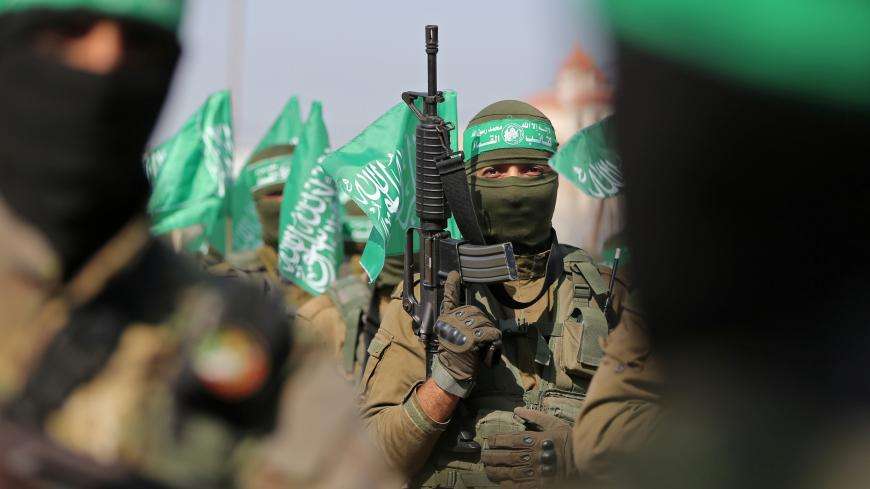Context
PoliTact has previously noted that since 9/11 the threat perception of the Middle Eastern nations have transferred from being fixated on Israel to dealing with and countering violent extremism. A similar shift also occurred in South Asia, where the debate has continued if the threat Pakistan faces is primarily external or internal. More specifically, should Pakistan focus its defense and security strategies towards dealing with India, or fighting extremist groups that are specially targeting the country.
Despite years of efforts, in the absence of political roadmap and deadlock on the diplomatic front, reaching a peaceful settlement to the perennial Arab-Israeli and Kashmir conflicts appear remote. However, a new ‘Outside In’ approach is emerging in the Middle East that is equally applicable towards the Kashmir conflict and the Afghan political reconciliation. And it has to do with change in the ecosystem in which these conflicts persist. What appear to be the key challenges in the campaign against extremists are also the key facilitators for the emerging approach.
Analysis
Understanding the Concept
At an event hosted by Atlantic Council on May 7, the author asked the former US special envoy for the Israeli-Palestinian negotiations and the present executive vice president of Brookings Institution, Martin Indyk, about how the Iranian nuclear deal and the US-Gulf partnership can help or hinder the Middle East Peace Process. And now that nuclear deal with Iran has been reached, this linkage is no longer just hypothetical construct.
Martine Indyk commented that the prospects of a solution emerging from an ‘Inside Out’ approach i.e., from with in Israel and Palestine, and independent of whatever else is going on in the Middle East, are not good. However, the potential for an ‘Outside In’ solution which has emerged because of the possible Iran nuclear deal and Israeli and Arab countries being on the same side, might emerge with positive response because of the new strategic alignment in the region.
Speaking at the Heritage Foundation, Israeli envoy to the US, Ron Dermer, recently commented along the same line:
“They used to believe the key to that [a rapprochement with the Arab word] was solving the Palestinian question, and there is no doubt that issue cannot be ignored,” Dermer said.
He continued: “But as the prime minister said a few months ago, I’m not so sure the reverse won’t be true, meaning that I don’t know if Israel and Palestinian peace will unlock wider rapprochement with the Arab world. It might be broader rapprochement with the Arab world will unlock Israeli-Palestinian peace. We should be focusing the next few years on how we can take advantage of this historic aligning of interests between Israel and our Arab neighbors.”
Key Elements of Outside In Method In South Asia
As the theater for the war against terror expands unabated, the environments in which extremism persists in South Asia and Middle East are also evolving. There are two particular impediments that are forcing the state actors to change their past policies towards non-state actors. These challenges are also serving as the key facilitators for the evolving ‘Outside In’ method.
Multilateral Approaches
Firstly, without adopting a multilateral approach, it is difficult for any individual state to deal with extremism comprehensively. For example, in the context of South Asia, pressure on extremist groups in Afghanistan had made them slip over to the Pakistan side of the border. Now that Pakistan has acted forcefully through its operation Zarb-e-Azb, the extremists have crossed over to Afghanistan.
This reality has forced both nations to cooperate; especially when along with Afghanistan the economic and security situation of Pakistan has also dwindled overtime. And if the trend continues, it would become very difficult for Pakistan to maintain its posture against its regional rival India.
Islamic State, Al Qaeda and their Associates
The other aspect has to do with the introduction of a new player in the extremist ecosystem of the region that goes by the name Islamic State (also known as ISIS, ISIL and Deash). While mixed reviews have emerged regarding the IS penetration in South Asia, the group does appear to be adding the pressure on different factions of Afghan and Pakistani Taliban. IS is aligning itself with those factions of Taliban that are against any kind of reconciliation in Afghanistan and the ones that are acting against the state of Pakistan.
If this pattern holds, IS is likely to undercut and weaken Al Qaeda’s (AQ) connection with its associates in the region. The associates are known to include Afghan and Pakistani Taliban, sectarian outfits, including jihadist groups oriented towards Kashmir and India. Allegedly, some of these entities are also under the influence of Pakistan.
In a nutshell, IS can disrupt the traditional hierarchies and influences under which the extremist ecosphere has operated in the region and steals their traditional platforms.

Transplanting the Circumstances of Middle East on South Asia
This can lead to a lot of infighting in a fashion similar to what is unfolding in the Middle East where the Sunni IS and AQ and associates are fighting with each other, and at the same time targeting governments of the region. On the other hand, Sunni nationalist groups such as Kurds and Shia non-state actor, Hezbollah, are proving quite effective in countering IS and AQ. Without the support of Hezbollah, Asad’s regime in Syria would not have survived.
Recent reports indicate that IS has now also threatened and challenged Hamas in Gaza. Under pressure from Egypt and US, Hamas has cracked down on the jihadist that oppose reconciliation with Fatah and Israel. “We will uproot the state of the Jews [Israel] and you [Hamas] and Fatah, and all of the secularists are nothing and you will be overrun by our creeping multitudes,” an IS member was quoted as claiming in a video release.
While Hamas itself is a jihadist group, its struggle against Israel has been under the umbrella of Palestinian nationalism, unlike IS and AQ that have global ambitions and do not affiliate with nationalist causes.
There is a real prospect for a similar dynamics playing out in the South Asia region as part of the ‘Outside In’ process. In such a scenario, AQ and IS, including their associates, are likely to target the state of Afghanistan and Pakistan while at the same time going at each other. Some of this is already in play. As this evolves, and as is occurring in the Middle East, IS will attempt to steal the platform of Afghan Taliban, including Kashmir oriented jihadist groups.
On the other hand, India oriented jihadist groups may come to the defense of Pakistan, in the same way Hezbollah is now focused on protecting the Syrian regime and distracted from its concentration on Israel. In this context, the concept of non-state actors that are under some sort of state influence, and those that do not listen to anyone has been previously discussed in this space, has taken on an added emphasis.
In this picture, Sunni nationalist Baloch insurgents, would target both the state and IS and AQ. Moreover, the Baloch insurgents are likely to gain western support, as have the Kurds, in their fight against the extremists. This situation can add pressure on Pakistan and Iran to not target Baloch fighters, as they will be viewed as partners in the fight against extremists. This is the same predicament Turkey has found itself in vis-à-vis Kurds in the Middle East.
As the sectarian angel deteriorates, the groups that formerly formed the Northern Alliance in Afghanistan could also be back in action.
All of this will, however, shift the orientation of Pakistan’s policies and will make it view India and Afghanistan as allies against non-state actors. This is similar to how the threat perception of Arab states have shifted away from Israel, while at the same time made them share Israel’s fear from Iran and the extremist groups.
Conclusion
As this scenario and ‘Outside In’ approach unfolds, and faced with a common threat, will change how the obstacles in the way of settling the Kashmir issue and Afghan reconciliation are viewed. During the first phase of the process, confronted with existential threats, will obviously result in transformation of long-held positions and policies of the states in question. However, its unlikely this would suspend the dynamics that would have been unleashed.
At the end of World War II, the insurgencies and other religiously oriented militancies that opposed the colonial powers, and their allies, were absorbed by the new nation-state structure, while giving birth to the irredentist claims that presently pose a risk.
Now that the concept of nation state is threatened, and as the extremist phenomenon undergoes fission and fusion, the question is what kind of new order will be able to absorb and deflect their energies. While infighting amongst extremist groups weakens them in the short term, in the long run, one or the other group may start to domineer. As was the case in the past, how these religious and insurgent groups intermingle with regional and global powers, will provide clues towards understanding the future direction.
Note: The above analysis is based on a scenario that explores the possibilities based on the trajectory of present circumstances in the Middle East. PoliTact will continue to monitor the situation and adjust the scenarios according to the developing reality.





